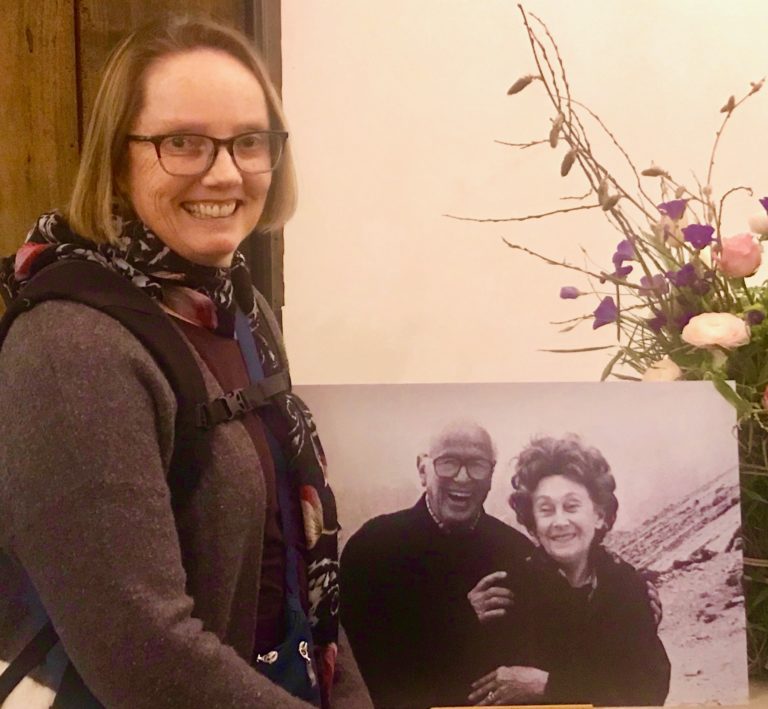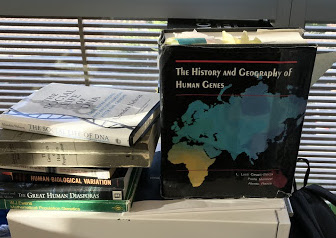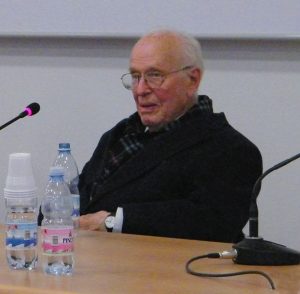
By Joanna Mountain, 23andMe’s Senior Director of Research
In March, seven months after his death, I had the immense honor of attending a memorial for thepioneering human geneticist Luigi Luca Cavalli-Sforza at the University of Pavia, Italy where he had once studied medicine.
Luca, as his friends knew him, died in August of last year at his family home in Belluno. He was 96, and in his near century on the planet he never stopped pondering the most important questions for many scientists like me:
Who are we and where do we come from?
Learning from Luca
Those were the questions that first drew me to the study of human genetics, fresh from a stint in thePeace Corps in Africa. I had the good fortune to know and learn from Luca, who acted as my doctoral advisor at Stanford. It is hard to overstate his importance, not just to my life’s work, but also to the field of human genetics, and to the core of what we do here at 23andMe. Without the kind of breakthroughs made by Luca, we couldn’t do what we do here.
Long before scientists developed methods for genotyping or sequencing individuals, Luca envisioned that our genetics could tell us not just about individual traits, but about differences between human populations and details of human history and migration. And he did this all in typical Luca fashion by thinking big, drawing from multiple disciplines, and doing it all unafraid of the controversy he might stir up. These are values that are core to 23andMe.

My well-worn copy of The History and Geography of Human Genes.
Luca had been a doctor in Italy after WWII, when he first began theorizing that genetics could inform what we know about human migration and cultural evolution. Using hundreds of years of church records, blood types, and statistics, he was able to lay the foundation for the study of genetic inheritance across small villages in his native Italy. In his work there, then at Cambridge University and finally at Stanford, he developed statistical approaches to analyzing genetic differences among populations.
Human Geography
I still turn to my dog-eared and weathered copy of his 1,000-page tome The History and Geography of Human Genes . In some respects the science has moved on from this now 25 year-old book, but no one in population genetics would ignore this cornerstone work. Like Luca, the book is full of surprises, beauty and insights. It includes maps, descriptions of genetic variation, and draws on disciplines as varied as archaeology, linguistics, anthropology and statistics. It represents his endless curiosity that burned in him to the end.

Luigi Luca Cavalli-Sforza at a conference in 2010 at Capo di Ponte, Val Camonica, Italy. Photo: Luca Giarelli
Luca helped us understand that there is enough information in DNA to discern where people came from in the world and to offer us insight into ancient human migration. Studying genetics could help us trace our origins as people, and applying models of genetic drift over the course of human history could help us map out the tree that links us all. Luca also understood early on the importance of studying human genetic diversity and championed the Human Genome Diversity Projec t.
He actively fought and debated against racism cloaked as science. He showed that individuals within any given population differ genetically from one another about as much as they differ from people of other groups.
I was so very fortunate to have worked closely Luca. He remains an inspiration for me, and the work we do here at 23andMe.
When I look at my own research, and the work 23andMe has done in the study of human migration — our Global Genetics Project, our Populations Collaborations, and even the Ancestry Services we offer our customers — I think of Luca, driven by curiosity and leading with science.